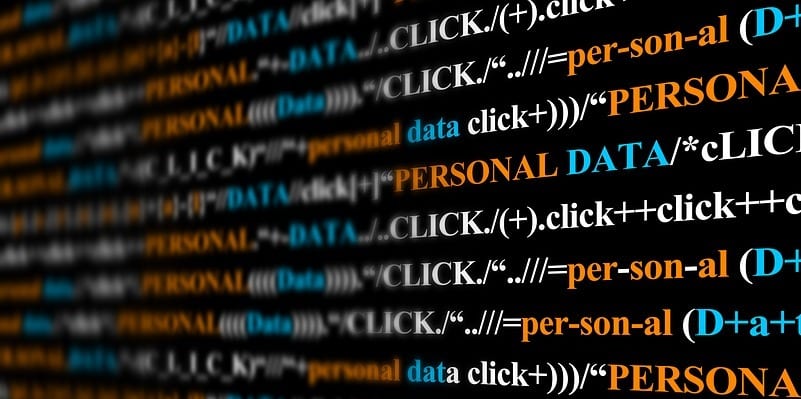A Complete List of The Best Data Science Programming Languages


Solutions Review has compiled a complete list of the best data science programming languages. From R to Python, these are the most popular options.
Data science is one of the fastest-growing fields in America. Organizations are employing data scientists at a rapid rate to help them analyze increasingly large and complex data volumes. The proliferation of big data and the need to make sense of it all has created a vortex where all of these things exist together. As a result, new techniques, technologies and theories are continually being developed to run advanced analysis, and they all require development and programming to ensure a path forward.
That’s where data science programming languages come in, enabling math-heads and organizations alike in handling pressing data challenges. There are a number of available data science languages, some open source and some proprietary, that are driving data science and machine learning. However, the one that is best for your unique scenario may not be obvious. Solutions Review has compiled this complete list of data science programming languages in an attempt to help you learn more, and maybe even identify a framework worth using.
R
R is a language and environment for statistical computing and graphics. R can be considered as a different implementation of S, and while there are some important differences, much of the code written for S runs unaltered on R. The language provides a variety of statistical and graphical techniques including linear and nonlinear modeling, classical statistical tests, time-series analysis, and classification and clustering. R capabilities are enhanced via user-created packages that allow for special statistical techniques, graphical devices and reporting.
R is available for free in source code form and runs on the UNIX platform and similar.
Python
Python is an object-oriented programming language comparable to Perl, Ruby, Scheme and Java. It utilizes an elegant syntax that makes the programs you write easier to read, and it is ideal for prototype development and other ad-hoc tasks. Python comes with a large standard library that supports many common programming tasks as well, including connecting to web servers, searching text with expressions, and reading and modifying files. The language can be extended by adding new modules as well.
Python is free and can be modified and re-distributed due to its open source license.
SQL
SQL is a domain-specific programming language designed for managing data held in relational database management systems. The language’s most common application is in handling structured data. SQL is made up of several sub-languages including those for data query, data definition, data control, and data manipulation. Extensions to standard SQL add procedural programming language functionality, such as control-of-flow constructs. SQL was originally based upon relational algebra and tuple relational calculus.
SQL was adopted as a standard by the American National Standards Institute in 1986.
Java
Java is a general-purpose programming language that is designed to have as few implementation dependencies as possible. Compiled Java code can run on all platforms that support it without the need for recompilation. Java is a popular language for client-server web applications and features a syntax similar to C and C++ but has fewer low-level facilities. Java uses an automatic garbage collector to manage memory in the object lifecycle, allowing programmers to avoid having to perform this process manually.
Oracle currently owns and is the official implementation of Java following their 2010 acquisition of Sun Microsystems.
JavaScript
JavaScript (JS) is an interpreted programming language that conforms to ECMAScript specifications. The language is used along with HTML and CSS as one of the three main tenets of the World Wide Web. It also enables web pages and remains an important part of web-based programs and applications. JavaScript supports event-driven and imperative programming styles, and has APIs for working with text, dates and normal expressions. However, it does not include support for networking, storage or graphics.
Java and JavaScript offer similar syntax and standard libraries but are very different in design.
Scala
Scala combines object-oriented and functional programming, and static types help avoid bugs in complex applications. Its JVM and JavaScript runtimes allow you to build high-performance systems with access to large ecosystems of libraries. Many of Scala’s design decisions are aimed at addressing criticisms of Java. Scala also provides language interoperability with Java so that libraries written in either language may be referenced directly in Scala or Java code.
Scala runs on the Java platform and is compatible with existing Java programs.
MATLAB
MATLAB is a numerical computing environment and programming language developed by MathWorks. It allows for matrix manipulations, functions and data plotting, algorithm implementation and interfacing with programs written in other languages like C, C++, Java and Python. MATLAB features an optional toolbox that allows for access to symbolic computing abilities as well. The language supports the development of applications with graphical interface features, and includes a GUI development environment for graphically designed GUIs.
MATLAB is a proprietary language of MathWorks.
Julia
The Julia data ecosystem lets you load multidimensional datasets, perform aggregations, joins and preprocessing operations in parallel, and save them to a disk. Julia has foreign function interfaces for C/Fortran, C++, Python, R, and Java, and it can be embedded into other programs through an embedding API. The language works with an array of databases and integrates with the Hadoop ecosystem as well. The Julia community has developed more than 1,900 unique packages for data manipulation and general purpose computing.
Julia is free for everyone to use, and all source code is publicly viewable on GitHub.
C/C++
C is a general purpose, imperative computer programming language that supports structured programming, lexical variable scope and recursion. It also provides constructs that map to typical machine instructions, and has found considerable use in applications that had been coded in assembly language. C++ on the other hand, is a combination of procedural and object-oriented language and is often seen as a ‘hybrid language.’ Many vendors offer C++ compilers, including Microsoft and IBM.
Learn more about the differences between C and C++ here.
C#
C# (or C Sharp) is a C and C++ hybrid Microsoft programming language. It is object-oriented and used with XML-based Web services on the .NET platform. C# was designed for improving productivity in the development of Web applications, and as a statistically-typed language, code is checked for errors before it gets built into an app. It touts the 4th-largest StackOverflow community and 7th-largest meetup community as well, and since it was developed by Microsoft, you can bet it will remain relevant into the future.
C# is the language most directly reflecting the underlying Common Language Infrastructure.
Ruby
Ruby is an object-oriented programming language that is used mainly for text processing. Programmers can also use Ruby to write servers, experiment with prototypes, and other general tasks. Ruby was released in 1995 and is listed on most of the indices that measure the growth and popularity of programming languages. The language is free to use, copy, modify and distribute, and features operator overloading, exception handling, iterators and closures, and garbage collection.
Ruby is developed under Linux and is written in C.
Perl
Perl is a general-purpose programming language originally created for text manipulation. It runs on more than 100 platforms from portables to mainframes and is suitable for rapid prototyping and large-scale development projects. It is also commonly used for system administration, web development and network programming. Perl is easily extended via 25,000 open source modules available from the Comprehensive Perl Archive Network. It interfaces with external C and C++ libraries as well.
Perl is open source software, listed under its Artistic License or the GNU General Public License.































